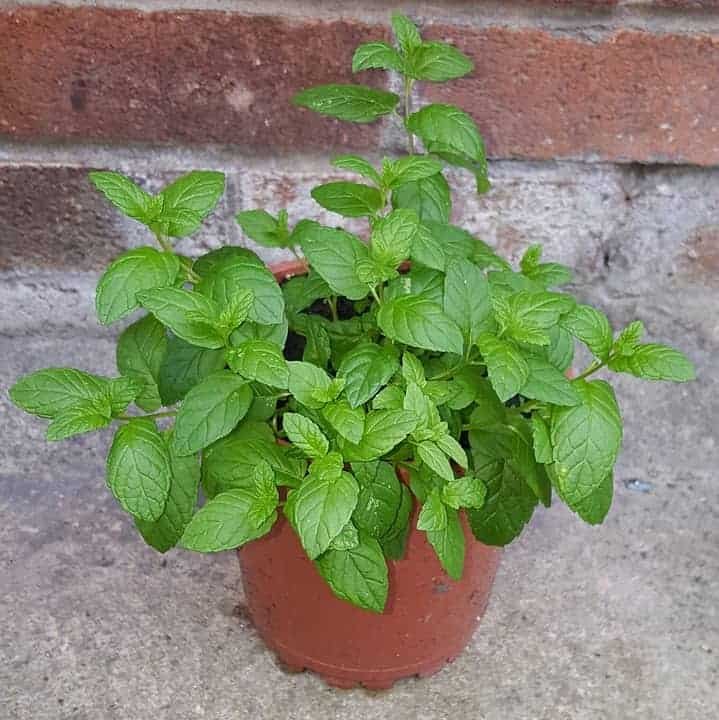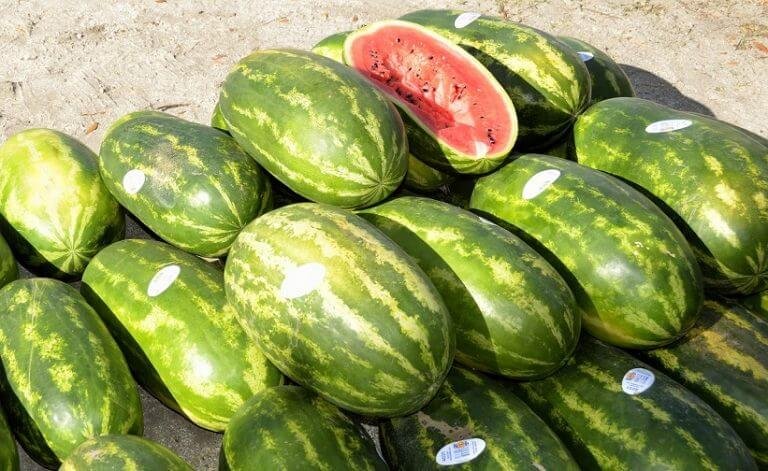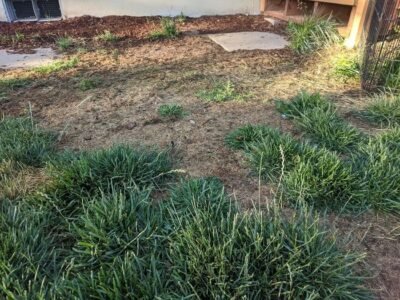How To Grow Mint from Seeds to Get the Best Results

If you want to grow mint in your garden, then this step-by-step guide will show you everything you need to know about growing mint.
This article is a complete guide on how to successfully grow mint.
It contains information about the history, different varieties, uses, and health benefits of mint.
In addition, you will also gain knowledge about the various diseases of mint and how to prevent and/or control them.
As a plus, you will also get some tips for general care of your mint plants.
Let’s get started.

Overview of the Mint Plant
Mint is a perennial herb with tiny purple, white or pink flowers.
The origin of mint is traced to the Mediterranean.
From there, it was later introduced to America and Britain.
In the early 1620s, physicians recommended the use of mint for mouth hygiene.
It was believed to be a good lotion for the teeth and mouth.
They also believed that it prevented the rottenness of the gums.
Read this article next: How to Grow Succulents Successfully Indoors and Outdoors in 7 Easy Steps
Uses Of Mint
- It is used in making digestive teas.
- Its leaves are used in several dental washes.
- Mint is used as a flavor in many dental products like toothpaste and mouthwash.
- It is also used to cure indigestion.
- Mint is a herbal remedy used in treating stomach upsets.
- It is known to improve and boost brainpower.
- It is used as air fresheners and herbal medicines.
- Industrially, mint oil is used in skincare products.
- Mint, especially peppermint is also used in hair products.
Health Benefits Of Mint
Here are the health benefits of mint;
1. Mint is rich in nutrients
It is an excellent source of vitamin A which is important for eye health.
It is also a potential source of antioxidants.
2. May Help Relieve Indigestion
Mint may also be effective in helping to relieve many other digestive problems such as upset stomach and even indigestion.
Indigestion occurs when food sits in the stomach for too long before passing into the rest of the digestive tract.
Many studies have shown that food passes through the stomach faster when you take mint oil with your meals.
3. May Boost Brain Function
There are claims that consuming mint may help to boost and improve brain function.
Though it has not been confirmed, mint may help improve brain function and also relieve stress.
4. Can improve cold symptoms
Most prescribed drugs for cold contain menthol, a primary compound in peppermint oil.
Though menthol isn’t a decongestant, it improves nasal breathing.
This means that it makes breathing through the nose easier.
5. Easily added to diets
Mint can be easily added to your diet.
It can be used to make teas.
For example, peppermint tea.
You can also add it to your salads, smoothies, and desserts.
6. Boosts Metabolism
It has been proven over time that mint boosts metabolism.
It stimulates digestive enzymes, which help facilitate better absorption of nutrients from food.
When your body is able to do this, your metabolism improves.
In addition, a faster metabolism aids weight loss.
If you want more awesome plants in your garden, then read about How to Grow Your Celery at Home and Get Good Harvest
What are the Best Varieties Of Mint To Grow?
If you want to grow mint in your garden, then here are some of the best varieties to grow;
- Apple/Pineapple Mint: Mentha suaveolens
- Bana Mint : Mentha arvensis
- Corsican Mint: Mentha requienii
- Pennyroyal: Mentha pulegium
- Peppermint: Mentha piperita
- Citrus Mint: Mentha piperita var. citrata
- Spearmint: Mentha spicata

Best Condition for Growing Mint in the Garden
- The soil must be moist and well-drained.
- Mints thrive in light soil with good drainage.
- They love to grow in partial shade.
- It depends on the varieties though as some may need protection from direct sun.
- Mint thrives in moist, rich soil with a pH between 6.0 and 7.0.
- It’s best to plant your mint in a sunny location where it can get about 5 hours of sun every day.
- The ideal soil temperature for planting mint is 55oF-70oF.
- Mint can grow almost anywhere in a very wide range of climates.
- For hotter climates, grow your mint in shady areas.
- For cooler climates, grow your mint in full sun.
Read also; Potato Farming Guide – How to Grow Potatoes Step-By-Step Guide
How To Plant Mint In 5 Easy Steps
Follow these easy steps to grow mints successfully;
Step 1: Soil Preparation / Potting mix
To prepare planting or potting soil, dig in plenty of rich organic compost.
Avoid using animal manures with potential weed seeds because it makes it difficult to weed.
Step 2: Planting Your Mint
Sow mint seeds indoors about 4-6 weeks before your last frost.
Let it be just beneath the soil surface in your pot.
You can decide to propagate with your cuttings too.
Use cuttings of about 6 inches.
Plant them horizontally in the prepared pot.
Step 3: Grow Your Mint Plant
When growing your mint plant, it needs minimal care.
They usually grow to be 1 or 2 feet tall.
Make sure to water regularly to keep the soil evenly moist.
At first, your mints will develop into bushy, upright clumps.
Soon enough, they spread out with horizontal runners and underground rhizomes.
In just one year, your mint plant can turn into a 4-foot giant.
Step 4: Picking And/Or Pruning Of Your Mint Plants
When it is springtime, give your mint a good trim.
If you stay in places with hot climates, trim in the fall.
The trimming gives your mint plants space to grow better.
Prune your mint plants back by about one-third after flowering.
Step 5: Fertilization
Fertilize your existing mint plants once a year in spring as the plant begins showing new growths.
The best fertilizer for mint is 16-16-16 granular fertilizer.
Apply about 1 teaspoon to the soil above the plant’s roots.
Make sure that it does not touch the leaves of your plant.
Bell peppers are absolute delights in meals. Read this article to learn How to Grow Bell Peppers From Seeds To Harvest [Complete Beginner Guide]
How To Harvest Mint Leaves
To keep your mint plants at their best, you need to harvest frequently.
Mint can be harvested as soon as it comes up in spring.
It’s advisable to harvest one mint plant 2-3 times in one growing season.
Start harvesting when your plant is about 3-4 feet tall.
When you harvest at this stage, it helps prevent your crop from growing into a bushier plant.
How To Store Mint Leaves
You can store your mint in the fridge.
They can also be air-dried in bunches.
Store the dried leaves in airtight containers.
If you like to use your mint fresh, you can just pick the leaves whenever you need them.
What are the Diseases of Mind and How to Prevent Them
Here are some of the diseases of mint and how to prevent them;
1. Powdery Mildew Of Mint
Powdery mildew appears on mint leaves, stems and flowers.
It appears as a powdery, white-colored coating of spores and fungal mycelium.
The causative agent of powdery mildew on mint is a fungus, Golovinomyces biocellatus.
Mix 1 tablespoon baking soda and 1/2 teaspoon liquid soap in 1 gallon of water.
Spray it on the plant from the leaf top and bottom to any affected areas.
You can add neem oil to the mixture to make it more effective.
2. Rust Of Mint
The causative fungus of rust of mint rust is Puccinia menthae.
This fungus affects only plants in the mint family.
This fungus will germinate when water is left to stand on the mint leaves for too long.
Water your mint plant in the morning to prevent rust.
Destroy all affected plants and plant debris.
Also, keep it away from the unaffected plants to minimize re-infection.
3. Leaf Spot Of Mint Leaves
The causative bacteria of leaf spots on mint is Pseudomonas syringae.
It first appears as irregular water-soaked spots that eventually turn brown.
Severely affected leaves may turn yellow and drop.
This disease can reduce yield because it causes leaf loss.
It is frequently seed-borne.
You can treat the seed with hot water for about 25 minutes.
Use mulch and drip irrigation to reduce disease transfer and spread.
4. Anthracnose
This disease appears as a tan to brown irregular-shaped spots on young leaves.
Infected leaves curl up or appear distorted.
If the infection is severe, remove and destroy all affected plants.
Also, prune out all infected wood on trees
Water your mint plant in the morning to prevent anthracnose.
You can apply copper sprays to control it.
You can also apply neem oil as an effective fungicide to prevent and control.
5. Stem Canker
This disease is caused by Rhizoctonia solani.
The symptoms include rotting or blackening of roots and runners.
You may also notice yellowing and upward curling of leaves.
Also, the plant may experience weak shoot growth.
It often results in plant death
Remove and destroy all affected plants.
You can also grow adapted or resistant varieties.
General care for growing mints
- It is better to grow mint in containers because it contains the roots better and prevents bushy growth.
- Do not overwater or underwater the mint plants to prevent them from dying
- Trim the mint plants when due to prevent them from becoming too bushy.
- Plant mint at the right time.
- Your mint plants will need regular watering and don’t let them dry out.
- Trim your mint flowers from time to time to encourage leaf production.
- Harvest your mint often.
Conclusion
So far, we have seen the step-by-step process of growing mint from seeds to harvest.
Also, this article contains the best varieties of mint to grow in your garden as well as the uses and health benefits of mint.
We did not leave out the diseases of mint and how you can prevent them organically.
Also, there are some extra tips in the article that will help you to grow mints successfully.
The aim of all of these pieces of information is to ensure that you succeed at growing good mints and growing them correctly.
The steps for growing mint explained in this article are so easy to follow and you will start getting results if you follow the steps.
Frequently Asked Questions (FAQS)
How can I know if my mint plant is overwatered?
An overwatered mint plant has yellowing leaves, weak stems, and droopy leaves.
Overwatering also makes your plants more susceptible to diseases like rust and powdery mildew.Do I need to protect my mint plants?
Yes, you totally need to.
This is because mint plants are shallow-rooted and easy to pull out.
You can protect it by providing physical barriers like walls, containers, or walkwaysHow often should I water my mint plants?
Water your mint plants twice a week thoroughly.
My mint plant is dying. What could be the cause?
It is caused by underwatering.
if you don’t water your mint plant enough, it will die.
References:
- www.healthline.com – 8 Health Benefits of Mint
- www.almanac.com – Planting, Growing, and Harvesting Mint
Recommended Articles
- 10 Pro Tips on How to Take Care of Succulents
- 6 Uses For IBC Totes On The Farm
- Revolutionizing African Agriculture: The Potential of Bokashi Composting
- Cucumber Farming: How to Plant, Grow, and Harvest Cucumbers
- Okra Cultivation Guide – The Step-By-Step Okra Farming Procedure
- Cucumber Companion Planting [The best and the worst crop to grow with cucumber]





